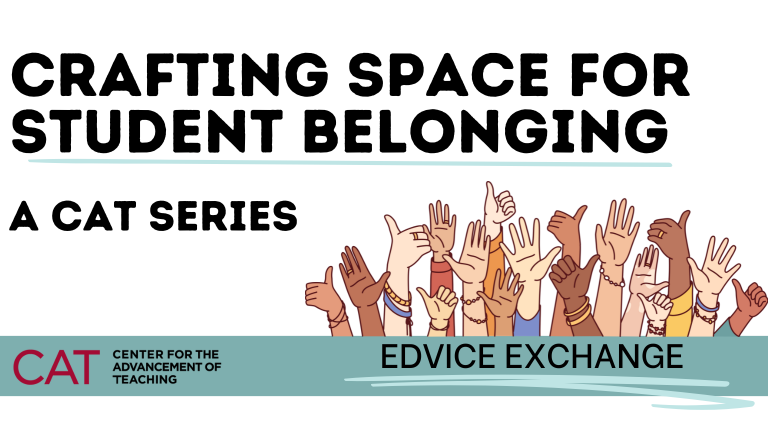by Elizabeth White Vidarte

Collaborative group work offers rich opportunities for learning — but it can be challenging in asynchronous online settings. Unlike in-person courses, online groups must navigate different time zones, communication styles, and technological barriers. You might hesitate to assign group projects in these settings, concerned that students will struggle with coordination or that uneven participation will lead to frustration. However, with thoughtful planning and intentional structuring, asynchronous group work can be highly effective, fostering deep learning, engagement, and the development of essential collaboration skills.
This post lays out strategies for designing and facilitating successful asynchronous group projects. From setting clear expectations and communication norms to structuring collaboration and handling conflict, these approaches will help you create a supportive environment where students can thrive — together, even while apart.
Start by Planning
Before assigning a group project, consider a few key questions. If the first two questions give you pause, consider whether the project truly needs to be a group assignment. But if question #3 stumps you—good news! That’s exactly what we’re covering in this section.
- What learning goal is the collaborative work addressing? Ensure this goal is reflected in your assessment criteria.
- How will you assess the group’s work? Will you evaluate the final product, the process, or both?
- How will you guide and support students through group work? Do you have strategies for setting expectations, facilitating communication, and managing conflict?
Lay the Groundwork: Self-Assessments & Group Agreements
Before students can collaborate effectively, they need to reflect on their own work styles and how those might impact a group dynamic.
- Ask students to self-assess – Have students evaluate their strengths, communication preferences, and potential challenges when working with others. Students can share reflections in a document, discussion board, or via short video/audio messages.
- Create group agreements – Once students understand their own working styles, they should develop a group agreement outlining:
- Preferred communication methods (e.g., email, discussion boards, messaging apps)
- Expected response times for messages
- Decision-making processes
- Conflict resolution strategies
- How to support each other when life gets in the way
Establish Communication Norms
One of the biggest challenges of asynchronous group work is staying connected without real-time interactions. To prevent miscommunication and disengagement, students need clear communication channels and regular check-ins.
- Help students choose the right tools – Some may prefer Canvas discussion boards, while others might use Slack, Microsoft Teams, or shared Google Docs. Ensure accessibility across different locations.
- Encourage proactive communication – Students should check in regularly, not just when problems arise. A simple message like “Hey team, I’ve drafted my section—let me know if you have any feedback!” keeps things moving.
- Require a team check-in – Assign a brief weekly discussion post where students update each other on progress. Alternatively, encourage brief Zoom meetings or an asynchronous video/audio update.
- Set norms for tone and format – Written messages can be misinterpreted. Encourage clear, respectful communication and suggest using video or voice messages when needed.
Use Structured Collaboration & Documentation
Without a clear structure, asynchronous group work can quickly become chaotic. Encourage students to document their work to ensure accountability and streamline collaboration.
- Use shared documents (Google Docs, Canvas Pages, or a wiki) to:
- Keep meeting notes
- Track deadlines
- Assign tasks
- Use margin comments – These allow students to ask questions or clarify ideas, mimicking organic discussion in in-person meetings.
- Designate an “Action Items” section – At the end of each document, ask students to include a section that summarizes next steps and responsibilities. By documenting key decisions, groups minimize confusion and create a transparent workflow that all members can follow.
- Use shared documents (Google Docs, Canvas Pages, or a wiki) to:
Have a Plan for Conflict Resolution
Even in well-structured groups, conflicts and challenges will arise. Help students assume positive intent and work through difficulties productively.
- Remind students to assume best intentions – Emphasize that tone can be easily misread online and encourage clarifying questions before assuming bad intent.
- Encourage compassion and flexibility – At any given time, students may be dealing with personal challenges that impact their ability to contribute.
- Establish a “cooling-off period” for disagreements – Encourage students to step back and revisit issues with a fresh perspective.
- If a team member is struggling – Coach students to reach out privately with a problem before escalating the issue within the group. Remind students that faculty support is available if they need help navigating group dynamics.
Final Thoughts
Effective group work in asynchronous courses doesn’t happen by chance — it requires intentional design, clear expectations, and structured support. By helping students reflect on their collaboration styles, establish strong communication norms, and document their work, you can create an environment where group projects lead to meaningful learning experiences rather than frustration. When done well, asynchronous group work not only strengthens students’ content mastery but also equips them with valuable teamwork and communication skills that they will carry into their professional lives.
By implementing these strategies, faculty can turn the challenges of asynchronous collaboration into opportunities for connection, growth, and deeper engagement. After all, learning is at its best when done together — even from a distance.
Elizabeth White Vidarte, Ph.D., works at Temple’s Center for the Advancement of Teaching as the Online Learning Specialist.